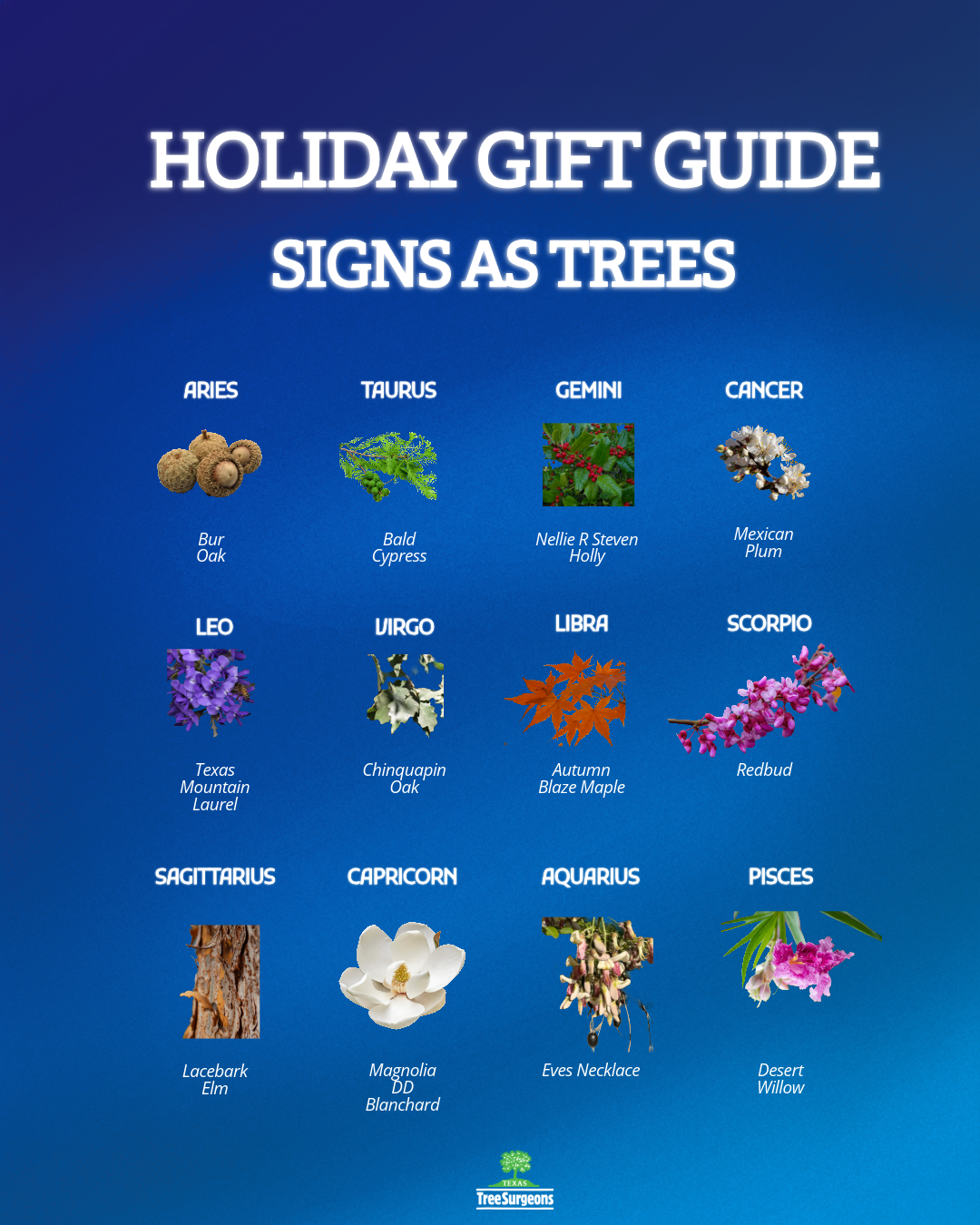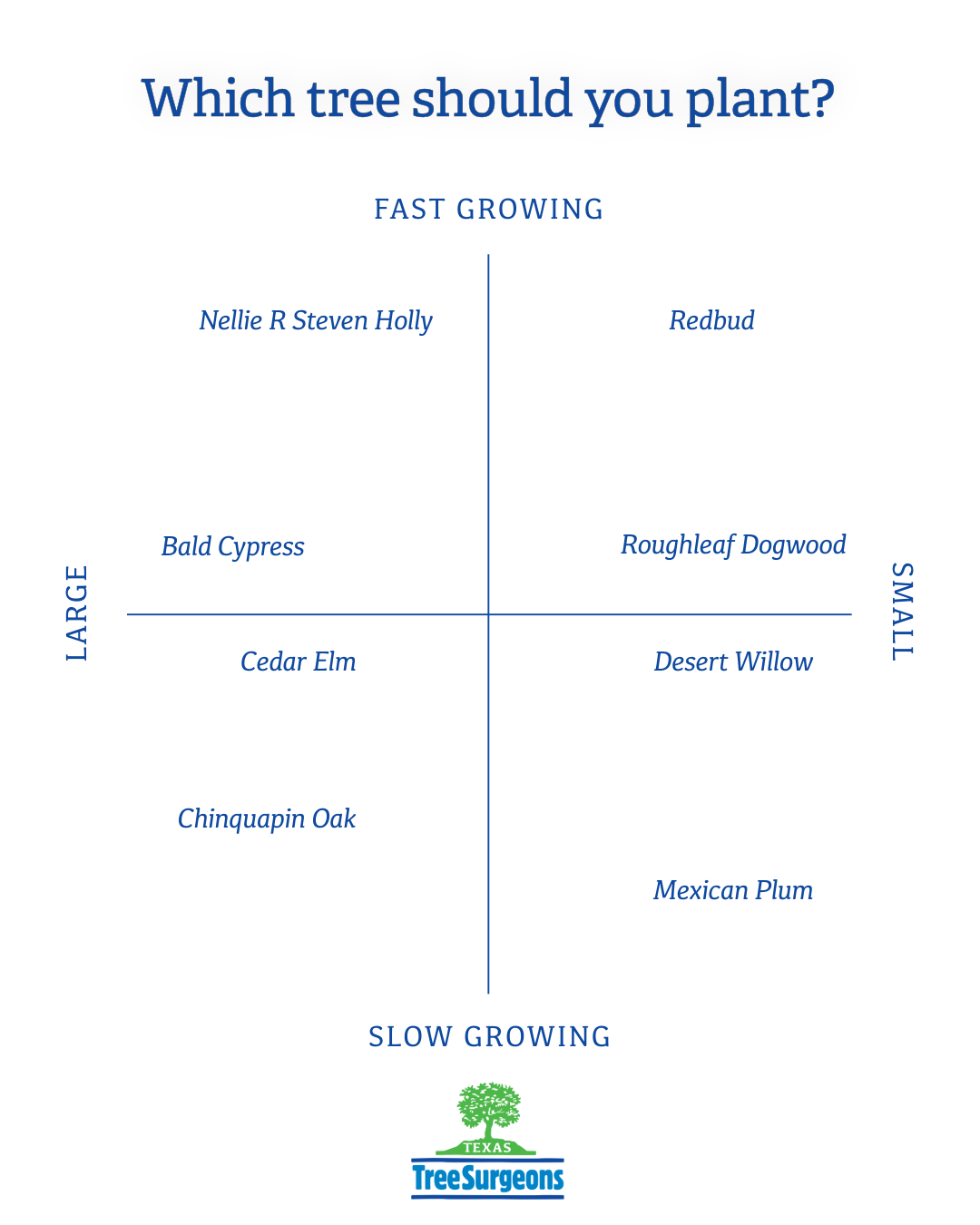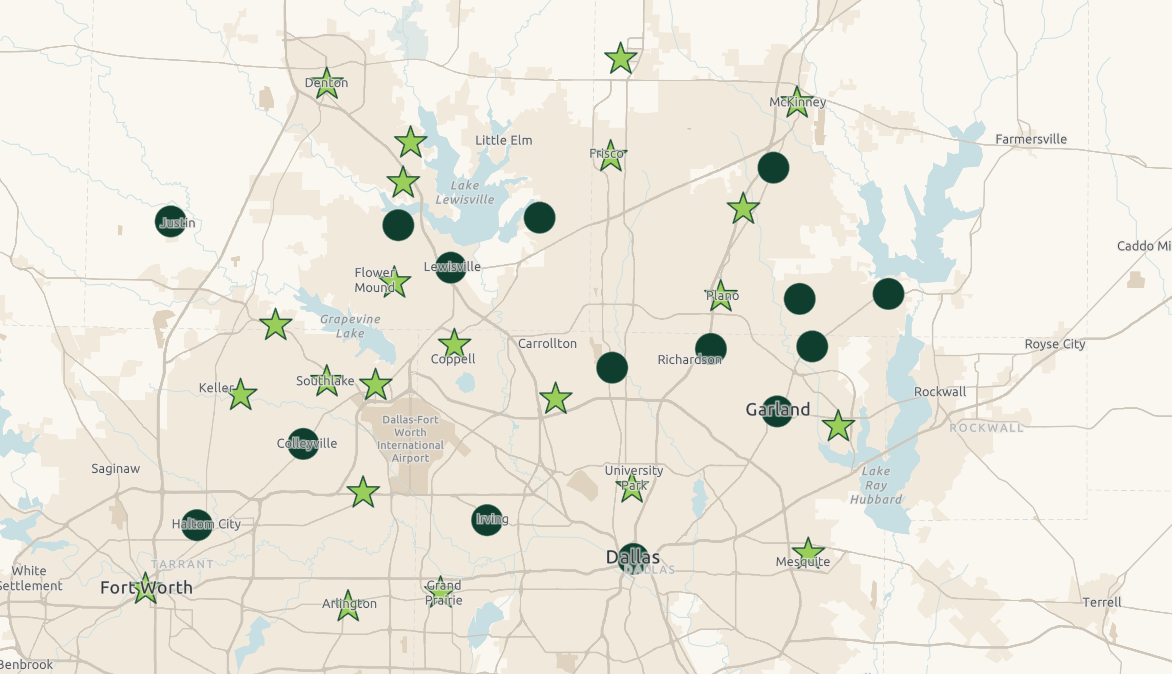Top 10 Worst Trees for North Texas

Do not plant these trees! Yes, we love trees but not all trees belong in North Texas. Some trees are invasive and others don’t thrive well. After the May 2024 storm our urban forest needs more tree’s, but not these. This is our top 10 list of trees to avoid planting in North Texas. This is our top 10 list of worst trees for North Texas.
Royal Paulownia (Empress Tree)

Don’t be fooled by their beautiful blooms. Native to China royal paulownia trees are incredibly invasive because they grow and produce seeds rapidly. This displaces native species quickly because they multiply quickly and hoard water and nutrients from other plants. This tree can quickly take over your yard and should be pruned regularly to keep it at a manageable size. When a person finally decides enough is enough, they soon realize they are very hard to remove. Even if cut down to a stump their roots will keep growing offshoots. Some states have banned the sale of this tree to keep it from destroying native species.
Bradford Pear (Callery Pear)

Once thought of as the perfect tree because of their blooms and pleasing looking limb structure have turned out to be the opposite of that. When in bloom the Bradford Pear tree flowers smell terrible. Some people compare it to rotting fish. Bradford pears were once a very common landscape tree in North Texas, and many Bradford pears in our community are reaching the end of their 30-year life span, and starting to fail. They are prone to poor, tight, overcrowded limb structure, which is why they are failing. These trees have a very strong, extensive root system which makes them invasive and hard to get rid of.
Italian Cypress

Chosen for landscaping to emulate a Mediterranean feel, these trees don’t do well with North Texas climate and soil. Our weather toggles from extremely dry, to extremely wet, to freezing temperatures. This range of extreme weather conditions are not suited for Italian cypress. They can’t handle the wet and prefer a dryer consistent climate. These issues make them prone to disease and insects such as; Seiridium Canker, Phomopsis, Phytophthora, Bagworms, and Spider Mites.
Leyland Cypress

Leyland Cypress has similar issues that Italian Cypress has here in Texas. These trees don’t do well with North Texas climate and soil. Our weather toggles from extremely dry, to extremely wet, to freezing temperatures. This range of extreme weather conditions are not suited for Leyland cypress. They can’t handle the dry and prefer a wetter consistent climate. These issues make them prone to disease and insects such as; Seiridium Canker, Phomopsis, Phytophthora, Bagworms, and Spider Mites.
River Birch

The river birch is not drought-tolerant, and most urban areas in North Texas do not have high enough soil moisture for them to thrive. They tend to develop chlorosis (yellowing leaves) because the tree is unable to absorb iron. These trees will need to be put on a Tree Health Care plan in order to survive in North Texas.
Palm Trees

Despite their name palm trees are not trees, but more closely related to grass or bamboo. Common in the southern and coastal parts of Texas, palms are not suited to North Texas soil or our extreme temperature swings. They may survive the extreme weather a season or two, but they won’t thrive.
Tree of Heaven (Chinese Sumac)

This invasive tree forms dense thickets that crowd out native plants with their extensive root systems. Their root systems are so aggressive that they can cause severe damage to sewers and foundations. Tree of heaven are difficult to remove once established because they can reproduce by sending out shoots, re-sprout from root fragments, and producing over three hundred thousand seeds a year.
Chinese Tallow (Popcorn Tree)

Chinese tallow is another invasive tree that crowd out native plants because they can easily grow in multiple soil types and climates. This tree was once a popular ornamental because of its fast growth rate, attractive fall color, and resistance to pests. Its sap is toxic to animals and can be a skin irritant to humans.
Ash

Emerald Ash Borer is spreading across more and more counties in Texas and because of this infestation we do not recommend planting an ash tree. Unfortunately, once an ash tree has been infested by EAB, there is little that can be done. EAB generally kills infested trees in two to five years.
Cottonwood

In an urban setting cottonwood trees are a poor choice due to their rapid growth that creates unstable and brittle wood that can easily break during windstorms. These large limbs when broken can lead to property damage or injury. In addition they are susceptible to root rot, and if you have a female tree they create messy pods which will upset your neighbors.
Related Blogs
Similar blogs related to this topic


Holiday Gift Guide, Zodiac Signs as Trees
This holiday season a gift that keeps on giving in a time of over consumption is the most ethical and thoughtful gift. It is investment in a shared future that benefits their home and the…
Read more

Which Tree Should You Plant?
Tree selection needs to include a balance of preference in style with species selection that can thrive in North Texas unique soil conditions and climate. Below are some essential questions to ask yourself to ensure…
Read more

Benefits of Becoming a Tree City USA in Texas
In recent years, many Texas communities are exploring how to achieve Tree City USA. Tree cities reap numerous advantages, ranging from environmental to social benefits, enhancing the lives of their residents. What are the perks…
Read more
